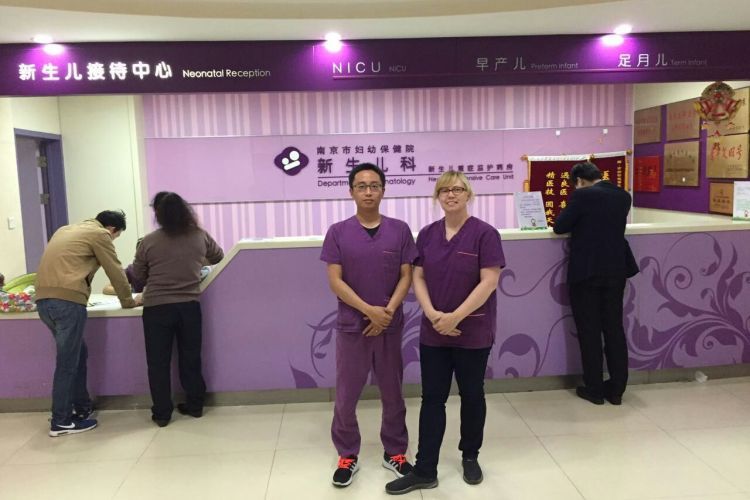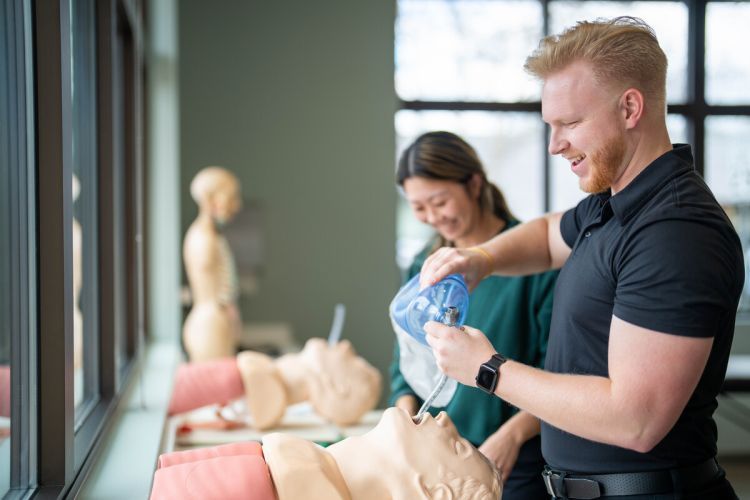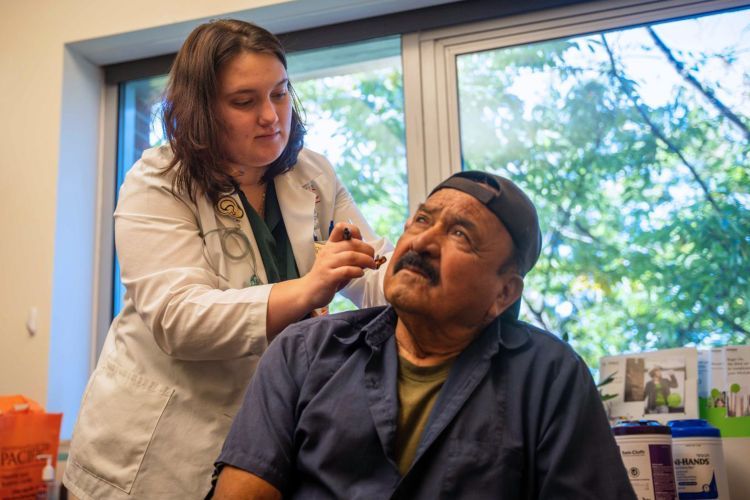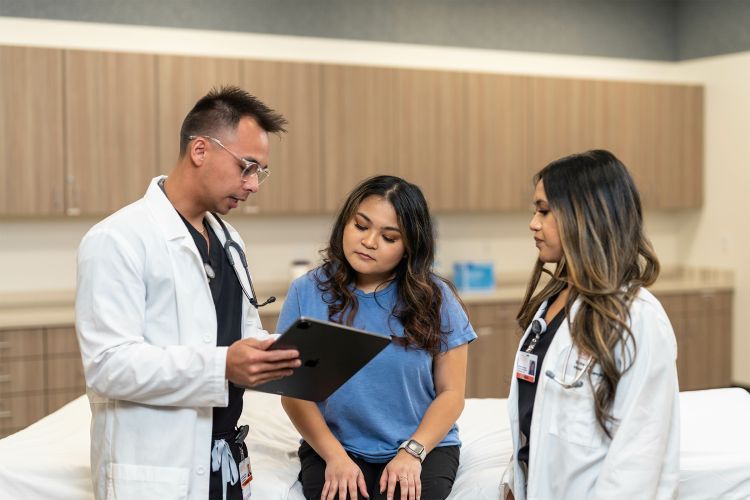Breadcrumb
Pacific research a game changer for identifying infants’ hearing-related issues

Pacific professors Jiong "Joe" Hu and Gabriella Musacchia collaborated with a pediatric hospital in Nanjing, China for their research.
Researchers at University of the Pacific could dramatically change the way hearing problems are identified in babies by creating a new gold standard for testing in hospitals around the country.
Audiologists on Pacific’s San Francisco campus are collaborating with a team from Stanford University to develop a method for testing speech processing in infants.
Most babies undergo a universal newborn hearing screening to test for hearing loss. But the screening doesn’t detect an important part of the equation—listening difficulties not related to severe hearing loss.
“We're trying to make that standard (test) better,” said Associate Professor Jiong “Joe” Hu, by detecting speech processing issues at the same time as hearing loss.
Gabriella Musacchia, associate professor and chair of the department of audiology, explains the difference as hearing versus understanding.
For many children who have difficulties processing speech, problems are not identified until they’re between the ages of 5 and 7 when they start having issues in school.
About 3-5% of school-aged children have listening problems without hearing loss, according to the National Institutes of Health.
“The reason we're working so hard on this is the earlier we identify the problems, the faster we can get intervention to the children,” said Musacchia.
The interest for Musacchia began when her own baby was born with jaundice, a condition in which newborns’ skin appears yellow.
“It turns out that babies with jaundice have a high chance of having language problems because the bilirubin (a chemical released by red blood cells), which is what makes them yellow, is neurotoxic,” said Musacchia.
Their research started in 2018 and included international collaboration with Nanjing Maternal and Child Health Hospital in Nanjing, China due to the country’s high rate of jaundice.

Gabriella Musacchia, associate professor and department chair of Pacific's department of audiology.
Pacific faculty members and several students visited China prior to COVID to examine infants and collect data. Anna Zhdamirova ’19 was a student during one of those trips.
“We tested (the babies) using a specialized method where you read their brainwaves in response to sounds,” said Zhdamirova.
A headphone was put on one ear, often as babies slept. “We put electrodes on the forehead and behind the ears, and that’s how you read the brainwaves,” she explained.
“What we've found is that infants who are at risk for developing these problems can be reliably identified with our new methods,” said Musacchia.
They’re now working to perfect the stimulus (specific sound) used for testing and establish clinic-ready protocols.
“The next step is to make it more clinician-friendly,” said Hu, meaning fast and simple.
Five Pacific students are on the project.
“We’re trying to perfect it on grown adults before taking it to the neonatal level,” said Madeleine Buchanan ’24, a first-year doctor of audiology student. She recently learned how to place the probes on people’s heads and record brain responses to sounds.
“I'll be able to actually perform this on patients that come into the clinic or I can do it on my fellow classmates, so that will provide lots of data and accuracy before taking it to that next stage,” said Buchanan.
Once they finish collecting and analyzing data, the new method will be used in a study with 100 infants at Stanford University’s Lucile Packard Children’s Hospital Audiology Center headed by Matthew Fitzgerald, chief of audiology at Stanford Ear Institute.
It’s the last step before the new testing method can be implemented.
The research has been a collaboration among two Pacific faculty members, two Stanford faculty members, 20 Pacific students, with five doctors and two nurses from Nanjing contributing.
They’re also working with Intelligent Hearing Systems, the company that makes the machines currently used for hearing tests, to make the process simple, requiring just a push of a button to do the additional testing.
Once the research is complete, Musacchia says they plan to work with universal newborn hearing screening boards to establish their method as part of the standard protocol for hospitals.
“This would be the new gold standard for hearing assessment,” said Musacchia, allowing children with speech and language processing disorders to get much-needed intervention at a younger age.





